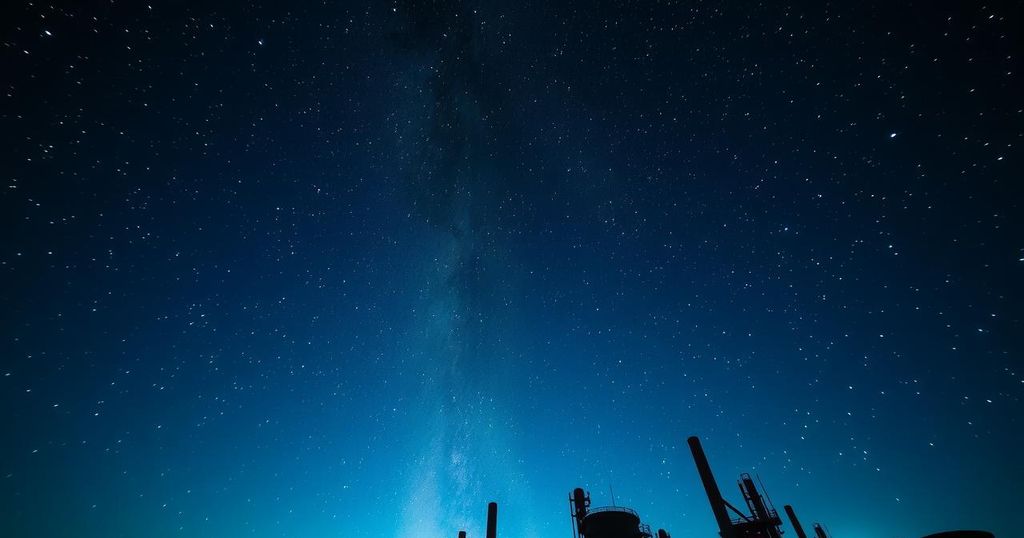Chile’s Atacama Desert, noted for its stellar viewing conditions, faces a significant threat from the proposed construction of the Inna green hydrogen processing plant. This project, relatively close to crucial observatories, risks introducing light pollution that would interfere with critical astronomical research. The scientific community urges a reevaluation of the project’s location to protect these essential dark skies.
In Chile’s Atacama Desert, renowned for its remarkably clear skies, astronomers are facing an urgent threat to their research environment. The region’s pristine darkness has made it a prime location for astronomical observatories, allowing for unparalleled observational capabilities. However, construction plans for a large-scale green hydrogen processing facility nearby, known as the Inna project, could disrupt the darkness essential for valuable astronomical observations.
The Inna project, proposed by AES Andes, encompasses a vast industrial area of 3,000 hectares, including a port and multiple solar power plants, situated just 11.6 kilometers from pivotal observatories. Critics from the astronomical community express concerns that the project’s necessary nighttime lighting and other operational impacts, such as construction dust and atmospheric turbulence, would severely hinder their ability to collect accurate data.
Dr. Fabio Falchi highlights the crucial requirements for successful ground-based astronomy: numerous clear nights, minimal atmospheric interference, and uninterrupted darkness. Key astronomical facilities in the Atacama, such as the Very Large Telescope at Paranal, have achieved groundbreaking research due to these ideal conditions. Any light pollution introduced by the Inna facility would compromise the quality of observations.
Itziar de Gregorio, the European Space Observatory’s director in Chile, emphasizes the need for atmospheric stability and darkness to advance our understanding of the universe. She warns that losing the quality of skies at observatory sites like Paranal would diminish Chile’s position in global astronomy and result in significant loss of investments into the region’s scientific infrastructure.
The proposed project’s public consultation process is currently underway, inviting dialogue amongst stakeholders. AES Andes has publicly stated its commitment to environmental responsibility, asserting alignment with Chile’s green initiatives. However, astronomer Eduardo Unda-Sanzana criticizes the short-term economic benefits of the project as incompatible with the long-term vision of advancing human knowledge through astronomy.
Chile’s existing light pollution regulations aim to protect dark skies, advocating for limited light emissions in sensitive areas. Dr. Falchi echoes the need for rigorous measures to address light pollution, analogous to the successful regulation of atmospheric pollutants. Urgent action is required to preserve the unique astronomical conditions in northern Chile for future generations.
The proposal for the Inna green hydrogen processing project in northern Chile poses a significant risk to the country’s invaluable astronomical research capabilities. With astronomical communities raising concerns over light pollution and construction impacts, the stability of Chile’s sky environments, long upheld as optimal for scientific inquiry, is under threat. The balance between industrial development and preserving dark skies is critical for maintaining Chile’s leadership in global astronomy.
Original Source: www.theguardian.com




